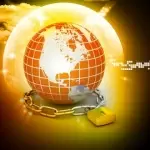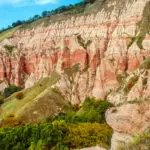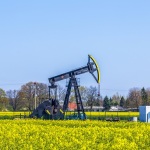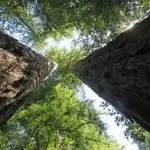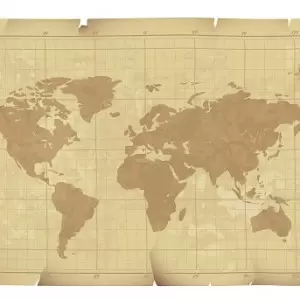
What is Cartography?
In North America, students may major in Cartography but also approach the subject from geography and surveying. In Europe, cartographers tend to enter into a mapping career through earth sciences (which includes geography and geology), geophysics, land surveying, civil engineering and even graphic design. Master's Degrees are typically required these days, especially if the individual wants to enter into a specialist area, and post-graduate students will be expected to have some experience with GIS software. In the next few years, a background in surveying or GIS is expected to become essential to any career in mapping.
Cartography is the creation and the study of maps and charts - the difference being that maps apply to land and charts are for marine areas (9, p299). It has a long tradition going back at least 4000 years; inextricably tied to geography for most of its history, in the 20th century it has diversified as it becomes more relevant in an increasingly digital modern world. Despite the advent of GIS, the two disciplines are not competing with each other, but complementing each other through a cross-disciplinary approach.
It isn't just about the compilation or the process of mapping, but also the history of maps. Who doesn't enjoy looking at what the world's borders or even their local area looked like 100 years ago? This is a valuable source for a wide range of academic disciplines. It stands on its own as raw data, but it can also tell you much about the people who compiled the map (1). Why was it compiled? How was it drawn? What was the motive for compiling it? Has it been embellished, and how? It may come as a surprise to think that maps can be and have been used for political propaganda (2, p207-8) but it is information that can be used by people to tell us what they want us to know. Like any other source of official information, they can be used to tell us what we need to know, and for others to tell us what they want us to know.
History
To the Renaissance
Mapping in early civilizations such as Mesopotamia and Egypt were linked to astronomy and what we then knew about the stars and about geometry and surveying (1). This information was vital to far more than mapping too; by plotting the heavens, leaders could organize society around the growing seasons. Surveying permitted the building of huge monuments, to plot how much land people owned and charge them tax. It is said the most efficient government documents are often the tax records and this is no less true now than it was then. The discipline seemed to change little between then and the eras of Greek civilization and Rome though the pinnacle of cartography during the Roman Empire was the map of the Roman world produced by Claudius Ptolemaeus. He produced a map of what he called “The Old World” (as it was then) and published a book called Geographike Hyphygesis (Guide to Geography) which would remain the primary authority in Europe for the next 1400 years (3). Great strides were made in China (4) and the Islamic world (5) but the reason for compiling them were often the same as the reasons they were compiled in Europe. That is, for political purposes to show the importance of the person or the country compiling them, to show the country or people in relation to the rest of the world, or predominance in relation to religious centers. During the Islamic expansion into Spain, maps in the Islamic world showed just how close to Christian Europe the religion had spread (6, p47-8). A special note about China is required here: in 1579, it was the first country to develop a grid system to plot maps and these were highly accurate compared to their contemporaries in Europe and the Islamic world (10).
In Europe, Jerusalem for example would have been shown at the center of the planet and the east would have been placed at the top (this is for religious reasons as the east was said to be closer to God - Jerusalem being east of most European powers such as Spain, France and England) (3). Here, we see how social attitudes affect map making way before it became a science.
Why do we see a veritable explosion of cartography during the Renaissance? For a number of reasons:
- Though it still remained subjective, is was well on its way to becoming a science (6, p45-46) and its uses were increasingly becoming recognized
- The discovery of the new world was a fierce battleground for the powers looking to claim as much of the land for themselves as they could. Growing imperialism was as much about documenting claims to new lands as it was about making the physical claim on the ground
- The printing press made the process of publishing maps - as it had with literature - easier than it had been before when every map had to be produced and reproduced by hand. The printing press would change much about world society (7)
- Growing sense of nationalism and national destiny, rather than fealty to local lords and duchies, could be fueled by and in turn fuel imperialist expansionism
- Those in power realized how useful maps could be in fostering and manipulating attitudes of the educated and uneducated alike. As a visual medium, the impact is immediate. As the saying goes, a picture is worth a thousand words
The Modern Era
Modern cartography as we would understand it today began in the late 18th century (10). Interestingly, the development of cartography as a science - working it down even to small areas and attempting to create visual representations of land on a wide scale - is less to do with study for study's sake that other sciences developed from, but out of warfare. Topography has long been understood as an important aspect of infantry attacks and defense. Battles and wars can be won or lost based on how a commander chooses to position his units on the battlefield (9, p299-300). The hopelessly outnumbered English archers at Crecy showed how topography may be used to advantage of an outnumbered force.
The basic philosophy in calculated how to use an navigate a landscape via maps is useful in aid and relief efforts following natural disasters - the lay of the land can be vital to saving lives and even how those approaching an area can best get to the destination.
Today, national organisations such as Ordnance Survey in the UK produce a variety of maps for different reasons and there is a much greater focus on accuracy and the transmittal of relevant information - depending on the type of map produced and the type of map needed. Cartography is a global discipline. At the beginning of the 20th century, aerial photography changed the face of mapping once more and we saw accurate measurements as a matter of course.
However, that is not to say that all maps in the modern era are entirely about accurate portrayal of national boundaries or local topography; the Soviets, Fascist Italy and Nazi Germany all used maps to foster a sense of national pride to justify their expansionism. Mapping has been in the hands of authorities for several hundred years - governments, religious institutions, academics and others with the expertise and knowledge to produce them (8). As with many other things, it is the internet, the open source approach of modern digital data, lower cost of the software used to produce maps and courses to learn GIS (modern digital mapping) means that we are seeing a growth of available information arguably not seen since the advent of the printing press. Some have hailed the end of traditional map making with open sourcing and outsourcing, but local knowledge remains vital and people will always need maps. Cartography may need to diversify, and GIS will arguably complement and not replace it (11). Amateur map making compiling local data is easier than it has ever been, and may provide a useful source in future, but digital media is unlikely to render paper maps obsolete.
Cartographic Propaganda: The Politics of Mapping
Undoubtedly, maps have been used for political ends. Even as a primary data set, they can be manipulated to tell people what you want them to know. In fascist Italy where the geopolitical journal Geopolitica was produced between 1939 and 1942 (13, p1), this is the most famous case of cartography and geography as propaganda. This journal received a lot of government support and therefore was largely influential in the revisionist approach to history seen throughout the fascist world of the 20th century, and arguably the same sort of arguments and information produced by propagandists today. The techniques of cartographic propaganda are well known and well understood (14).
We also see similar instances of maps influencing national thought in Nazi Germany and Communist Russia (15). Even the color of the nations in a world map can foster ideas about the country being highlighted (13, p11) - for example, Britain and her Commonwealth were painted a sickly yellow by Nazi Germany, suggesting a country lumbering towards its death whereas the Axis Powers were a healthy red color. The Allied Powers were not immune to this either, Frank Capra himself compiled a map for the US public to influence the notion that Nazi Germany and her allies were a threat to the US (15). World War II would not be the first or the last time a propaganda war would include maps - something that may otherwise seem innocuous (and perhaps, were used for that reason) can be highly influential when pitched in the right way to the right audience. The Franco-Prussian war is said to have been as fought “as much by maps as by weapons” by the President of the American Geography Society (13, p31). Today though, maps are more likely to show us erroneous information than be outright deceitful. For example, crime statistics need to be adjusted for population density to avoid showing misleading information.
What Next For Traditional Cartography?
Some have pronounced traditional cartography dead (16) in the light of modern technologies such as GIS, which require more IT knowledge than actual mapping knowledge - mapping knowledge that may be taught. We need to be cautious because though GIS permits graduates from a wider range of disciplines to enter into the field, GIS technicians do require more than a mere basic knowledge of how to use and manipulate a map and having a background in cartography is certainly an advantage.
Today, a point on a map is not just a point of interest - it is a data point, a node, a vector or a pixel that can represent a fundamental shift in a cartographer's thinking, but it is not impossible (17). When achieved, cartographers are able to find they can gather more data, do far more with the data they are gathering and work with it much faster.
Sources
- http://www.webcitation.org/5kwQeQNdg
- http://www.press.uchicago.edu/books/HOC/HOC_V2_B2/HOC_VOLUME2_Book2_chapter3.pdf
- Lestringant, F. 1994: Mapping the Renaissance World. Cambridge: Polity Press
- http://www.spertus.edu/exhibits/cartography-art-and-science-advent-printing-press-0
- http://ojs.unbc.ca/index.php/acme/article/view/723/585
- Longley, P.A., Goodchild, M.F., Maguire, D.J. & Rhind D.W. 2011: Geographic Information Systems & Science (Third Edition). Wiley: Hoboken, New Jersey
- http://geography.about.com/od/understandmaps/fl/The-History-of-Cartography.htm
- http://geography.about.com/od/understandmaps/a/Future-Of-Paper-Maps.htm
- http://www.metoffice.gov.uk/climate/uk/summaries/anomacts
- Atkinson, A. 1995: ‘Geopolitics and the geographical imagination in Fascist Italy ‘ Lughborough University PHD thesis (https://dspace.lboro.ac.uk/dspace-jspui/handle/2134/10383)
- http://www.geog.ucsb.edu/~kclarke/Geography126/Lecture12.pdf
- http://geography.about.com/od/understandmaps/a/Propaganda-Maps.htm
- http://makingmaps.owu.edu/mm/cartographydead.pdf
- http://www.software-maps.com/stories-is-cartography-dead.htm
- The Role of Artificial Intelligence in Environmental Sustainability - April 11, 2024
- The Role of AI in Tackling Climate Change - April 9, 2024
- VW Partners With Conservation Fund and 3Degrees to Manage and Restore Redwoods - June 19, 2015
Related Articles
Featured Article
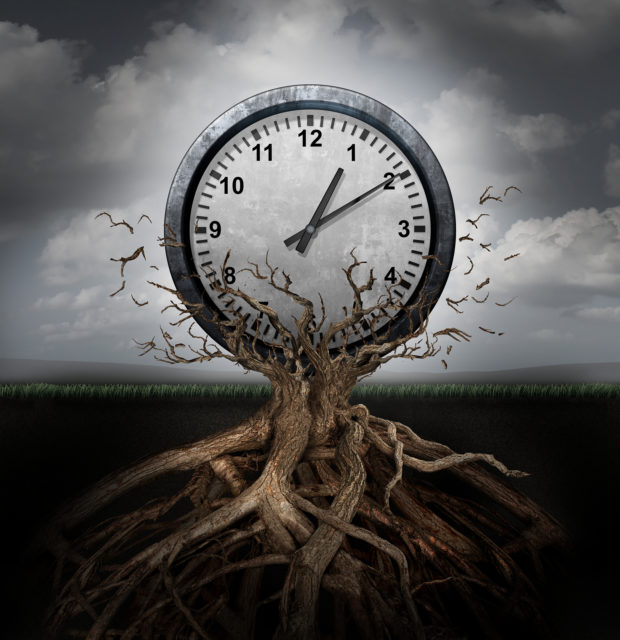
Chronology: Tools and Methods for Dating Historical and Ancient Deposits, Inclusions, and Remains


